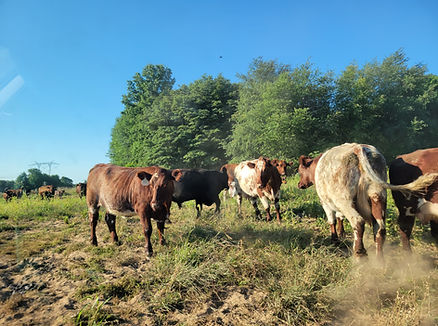
Under Our Covers
The Soil Is Alive!
Soil is healthier when it is kept covered and cover crops are one of the most common practices to make that happen.
The use of cover crops is rapidly growing in the US - the benefits are being seen!
Cover crops provide much needed
living roots
during the times between crops grown to harvest. Living roots increase the organic matter and create more pore space. They nourish the soil microbes and increase filtration.


What's Your Concern?
Productivity? Compaction? Erosion? Water Infiltration?
Cover crops are a key practices used to solve these concerns!

* Improved *
Soil Health
* Increased *
Productivity
* Reduced *
Environmental
Impact
* Increased *
Farm
Resiliency
Photo Credit: Jagdish Patel
But don't just take our word for it!
Hear directly from farmers that are using cover crops and other conservation practices!
The Soil Health Institute, NACD, and NRCS interviewed farmers from across the country to see how soil these practices have impacted their farms. Watch their interviews and read more about the practices: Soil Health Institute.
We Can Help!
Did you know we offer technical assistance? If you have a different vision for your farm, or if you have natural resource concerns, contact us to make an appointment!

Cover crops are key part of regenerative agriculture, but not the only practice!
Combining these practices can have a greater impact on farm productivity and the environment.
No-Till: Do Not Disturb!
Tilling is the practice of turning over the top six to ten inches of soil to mix in crop residue, manure, etc. Unfortunately, this common farming practice is very damaging to soil. Tilling loosens the soil and exposes it to wind and rain, increasing runoff and erosion. It also changes the pore space and increases soil compaction.

Practicing no-till leaves the soil covered in crop residue. This feeds soil microbes and increases the amount of organic matter in the soil. No-till also decreases the amount of soil exposed to wind and rain, and thus decreases erosion and runoff.

Check it out!
These are pictures from Associate Supervisor Mike Burkholder from a few years ago, during a long stretch of dry weather.
On one side is is conventionally grown corn. On the other, Mike utilized no-till.
Can you tell which is which?



Rotational Grazing
including reducing erosion and improving soil health, better distribution or manure through the pastures, and increased forage for livestock. Also, pastures tend to withstand periods of drought better as the plants have been given rest to grow stronger and deepen their roots.
Rotational grazing is the practice of dividing pastures into smaller sections called paddocks. The animals are rotated on a regular schedule. This allows time for the grazed pastures to rest and regenerate.
This type of grazing has many benefits,
Different crops and different fields have different nutrient requirements. Good nutrient management takes these factors into account and chooses amendments accordingly. Analyzing the site and the soil will decrease costs and environmental impact.
Nutrient Management
Conservation Crop Rotation
Crop rotation is planting a different crop during different growing seasons on a field. Moving away from monocultures improves soil nutrients and can break pest and disease cycles.
Filter Strips
Filter strips are purposeful vegetative strips are planted between fields and bodies of water. They create a buffer to help decrease pollutants and sediment from flowing into the water.
There are many practices that we can help with! Check out our Farm Bill page to read more! Also refer to our Soil Health page for links to sites for these and other beneficial conservation practices.

